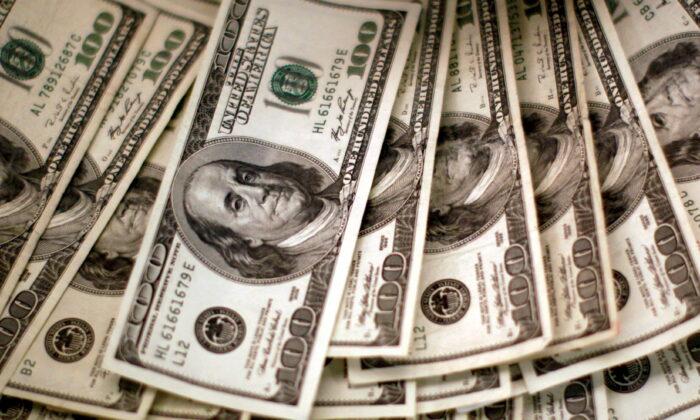LONDON—The dollar weakened to a two-month low on Tuesday after Federal Reserve officials signalled that the central bank was nearing the end of its tightening cycle, while the pound hit a 15-month high after pay growth exceeded expectations.
Several Fed officials said on Monday the central bank would likely need to raise interest rates further to bring down inflation but the end to its current monetary policy tightening cycle was getting close.
The comments knocked the greenback to a two-month low of 101.66 against a basket of currencies, as traders pared back their expectations about how much further U.S. rates may have to rise.
“Broader pressure on the USD is likely to develop as cyclical headwinds mount and markets begin to anticipate easier Fed policy settings,” said Shaun Osborne, chief FX strategist at Scotiabank.
Markets are now focusing their attention on U.S. consumer prices data due out on Wednesday, which will provide more clarity on the progress the Fed has made in its fight against stubbornly high inflation.
European Currencies Strengthen
Sterling, meanwhile, hit a near 15-month high of $1.2933 after British wage growth hit a joint record high, heaping pressure on the Bank of England to tighten policy further to bring inflation under control.The pound has been rallying on a stronger economy and aggressive repricing of expectations for tighter BoE policy, according to Danske Bank FX analyst Kirstine Kundby-Nielsen.
“There have been no signs of relief in the labour market data and markets continue to price in more. That’s been a huge factor driving the pound,” Ms. Kundby-Nielsen said.
Other European currencies were also strong, with the Norwegian crown hitting a near three-month high, the Swedish crown at a two-week peak and the Swiss franc at its strongest since January 2021 against the greenback.
At its June meeting, the Swiss National Bank reiterated it was ready to intervene in the FX market to boost the value of the franc and reduce the effect of more expensive imports.
“This is an important reason for the continuous strong CHF,” Danske Bank’s Ms. Kundby-Nielsen said.
“Likewise, the Swiss economy continues to hold up well ... fundamentals continue to favour a strong franc.”
The yen was among the biggest gainers, strengthening around 0.6 percent and past 141 per dollar for the first time in nearly a month. It was last trading at 140.405.
The yen has risen more than 3 percent from a seven-month low touched last month, when it weakened past the closely watched 145 per dollar level that put traders on high alert for possible intervention from Japanese authorities.
“(The yen) started to stall earlier on, close to 145, and that’s because there were concerns about FX intervention,” said Bank of Singapore currency strategist Moh Siong Sim.
“The market is starting to wake up again to the idea that there is a (Bank of Japan) policy risk going into the July meeting ... Given the rising inflation backdrop in Japan, the market is starting to become more wary that perhaps a policy tweak could come.”
Elsewhere, the euro was flat at $1.1004, the Australian dollar slipped 0.2 percent to $0.6665, while the New Zealand dollar fell 0.5 percent to $0.6181 ahead of the Reserve Bank of New Zealand policy decision on Wednesday.





